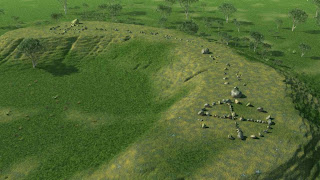Joint study books on history seems to be connected to this large-scale project.
July 7, 2018 - Russian, German historians present 1st volume of joint study book on history
Russian, German historians present 1st volume of joint study book on history
First volume of the study book ‘Germany and Russia: The Milestones of Shared History in Collective Memory', which is a result of joint efforts of Russian and German scholars, was presented on Friday night at Tolstoy Library in Munich.
The 25-chapter book highlights the 18th century events.
"Quite naturally, there can be no common textbook [for both countries] because we espouse different didactical principles but we decided to produce a common study book," Dr. Alexander Chubaryan, the co-chairperson of the Mixed Commission for Studies of the Newest History of Russian-German Relations
told TASS.
"The commission has worked for many years and we think it has launched an educational project in the form of a book for teachers," he said. "This is the first experience of the kind for us in general."
In all, the study book will have three volumes devoted to the 18th, 19th and 20th centuries respectively. "Our German counterparts proposed to start off with the 20th century, or with the 3rd volume that has twenty chapters, including 14 joints ones," Dr. Chubaryan said.
A total of six chapters in the volume devoted to the 20th century dwell on the issues, on which Russia and Germany have differing position. "We’ve done it this way - one topic but two different articles, one written by a Russian author and the other, by a German author," Dr. Chubaryan said.
For instance, Russia and Germany’s views differ on Stalingrad and on the Molotov/Ribbentrop pact.
The experience of collaboration between Russian and German historians and the publication of the study book has produced a big public effect. "The idea has been echoed in other countries, and we’ve begun cooperation along these lines with Austria and Poland," Dr. Chubaryan said.
The Russian-Polish project will also have three volumes. "But we decided to publish a study book on the 19th century first and quite recently we did a presentation of the volume devoted to the 18th century," the scholar said, adding that the Polish sides has asked for drafting joint chapters only.
"Still when it came to the 20th century, I said this [joint chapters] was impossible," Dr. Chubaryan said, specifying that the two sides’ positions differed considerably as regards assessments of the events of 1939.
"In this way, our fruitful cooperation with Germany paved the way for cooperation with other countries, too," he said
Dr. Chubaryan underlined the high standing of the sphere of culture, science and education, which remained beyond political turbulences in the current highly complicated international situation.
"I’m convinced it’s important to stay away from politicizing them and the German counterparts supported me on that," he said.
The Mixed Commission for Studies of the Newest History of Russian-German Relations was founded at the initiative of Russian President Boris Yeltsin and Germany’s Federal Chancellor Helmut Kohl. Its goal is facilitate to comprehensive studies of Soviet-German and Russian-German relations in the 20th century.
The commission assists the bilateral projects and publications and organizes annual colloquia alternately in Russia and Germany.
Notable historians and directors of central archives of both countries have membership of the commission.




